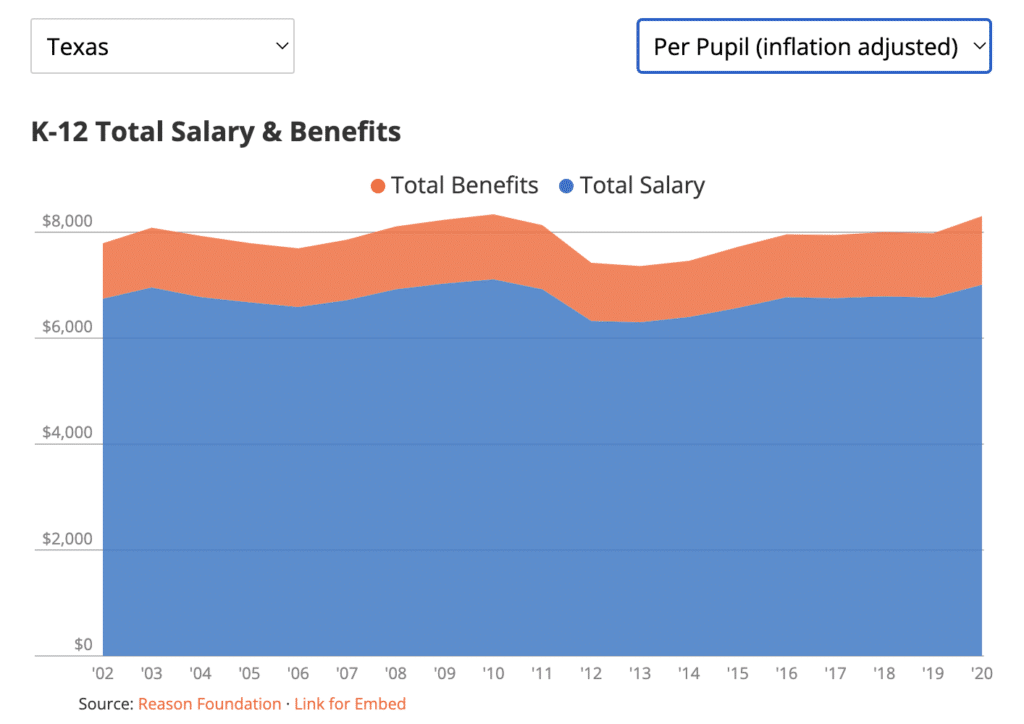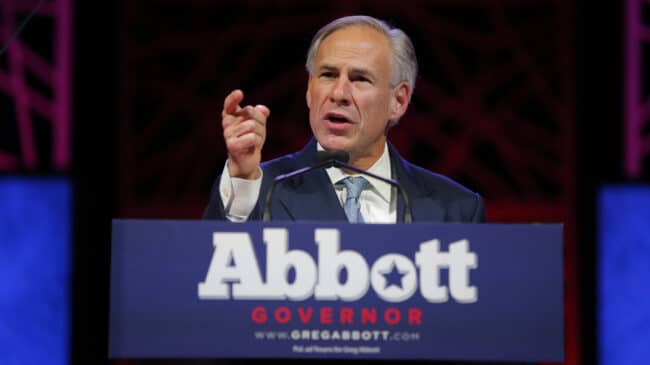School choice is becoming a bigger issue in Texas’s gubernatorial race. After Texas Gov. Greg Abbott announced he intends to support educational freedom during the state’s 2023 legislative session, Democratic gubernatorial candidate Beto O’Rourke claimed, “Abbott is for defunding our public schools.”
O’Rourke has repeated this claim in radio and newspaper ads targeting rural Texas areas. But Texas’s K-12 education spending data do not support O’Rourke’s allegation. Between 2002 and 2020, inflation-adjusted education spending in Texas increased by 16%, going from $11,473 per student to $13,346 per student.

Much of this funding increase went to staffing costs, with spending on employee benefits — a Census Bureau data category that includes teacher pensions and healthcare expenses — rising by 24% per student. Capital expenditures, such as building construction and equipment, have shot up by nearly 18% per student since 2002.

While it’s true that Texas trails the national spending average by $2,716 per student, that is partly because Texas is a relatively low-cost-of-living state. Legal rulings have also prompted policies restricting what single school districts can raise locally for their own operating costs, such as salaries and classroom supplies.
These policies mean wealthy school districts can’t drive up the statewide spending average as easily as they do in other states, resulting in a more equitable funding system that complies with the state’s constitution. For example, Austin, where property values are among the highest in the state, was required to send over $762 million of its local education-focused property tax money to other school districts across the state last year.
O’Rourke’s defunding claims also ignore important school finance legislation Abbott signed into law in 2019 with overwhelming bipartisan support. House Bill 3 made critical changes to the state’s funding formula and added $6.5 billion in new education spending, including bumps to the minimum teacher salary schedule and other assurances that increase teacher compensation.
The reform also directs more money to low-income students and rural school districts while creating new allotments for early childhood education, bilingual education, and students with dyslexia. These changes target a greater share of the state’s education funding to students who need it most.
Rather than cutting funding, Abbott and taxpayers have given Texas public schools a financial boost since the beginning of the COVID-19 pandemic. Education funding is typically tied to student attendance levels, but widespread enrollment losses during the pandemic would’ve decimated many school district budgets if not for key policy tweaks Texas made to help stabilize public school funding. For example, the Houston Independent School District lost 6.1% of its enrollment in 2020-21 — 12,759 students in total — but rather than losing 6% of its funding, its total revenues increased by 1.7%.
“Providing this adjustment to the 2021-22 school year will ensure school systems have the funding they need to retain the best and brightest teachers and provide quality education to all public school students across Texas,” Abbott said.
Putting it all together, there is nothing in Abbott’s record indicating his recent endorsement of school choice is aimed at defunding public education. Spending on K-12 education has increased since he took office, and many would agree that Texas’s school finance system is better than the one he inherited. If anything, taxpayers might question whether these investments were put to good use and why public schools aren’t being held financially accountable for enrollment losses incurred in the past couple of years.
While O’Rourke is criticizing Abbott’s embrace of school choice, many education advocates might ask the governor and Texas Republicans, who have controlled every branch of state government for 20 years, why it has taken this long to start providing more educational choices for families.
But, belated as it may be, if Abbott follows through on promises to let students attend “any public school, charter school, or private school with state funding following the student,” that’s not defunding schools. Instead, that’s finally an effort to give all families access to additional educational opportunities.
A version of this column previously appeared in the Washington Examiner.

